All over the world, people are getting more concerned about the threats posed by major new oil pipelines. They’re prone to spills and, as a result, they’re a serious risk to clean water and the wildlife, ecosystems and communities living along their routes.
A recent analysis from Greenpeace U.S. found that the pipelines of just three companies, Kinder Morgan, TransCanada, and Enbridge, have spilled on average once per week in the U.S. alone since 2010. Another analysis of pipelines owned by Energy Transfer Partners (ETP) and Sunoco (which is now owned by ETP), found an average of one spill incident every eleven days since 2002. ETP is the company behind the Dakota Access pipeline, which sparked the iconic Indigenous-led resistance at Standing Rock.
But it gets worse.

To respond to the growing climate crisis—with its super-storms, floods, wildfires, and other extreme weather events — we need to be rapidly moving away from fossil fuels towards renewable energy. Massive new oil pipelines do the exact opposite. They help expand the production and consumption of fossil fuels, locking us into higher emissions and increasing our addiction to oil at precisely the time we need to be scaling down the fossil fuel industry and its infrastructure through a just transition to renewable energy.
What’s more, major pipelines cost billions of dollars to build, money which could be used to create more jobs and support both the economy and the environment if it were invested in the clean energy economy of the future.
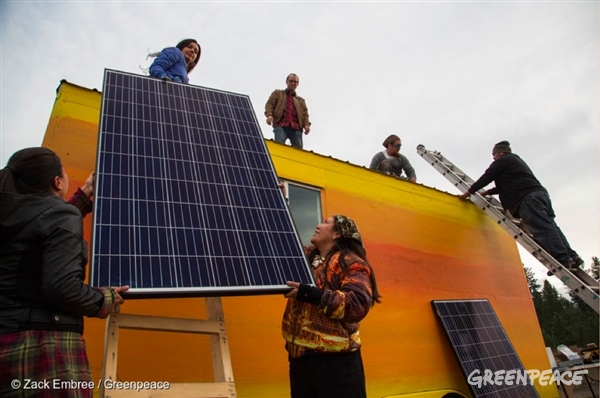
Because of these and other concerns, many Indigenous communities are opposing plans to build new pipelines through their territories. Indigenous Land and Water Protectors are leading the growing movement against pipelines and for a better future for us all.
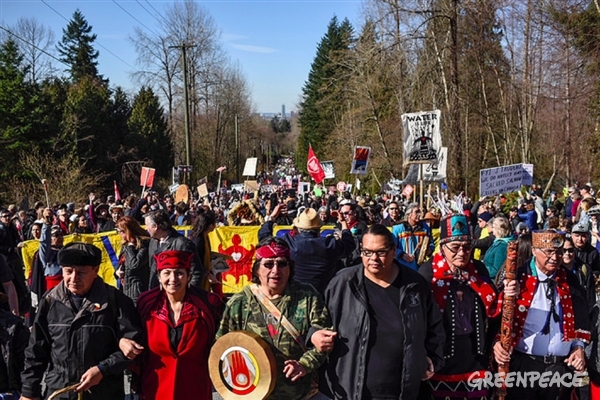
Rather than owning up to its issues and working to address them, the pipeline industry has been using nefarious tactics to silence and undermine those standing up for Indigenous rights, a sustainable economy, and a healthy environment. From fake grassroots (or “astroturf”) campaigns, to a baseless $900 million lawsuit targeting Greenpeace and others, to hiring mercenaries to use warzone tactics against peaceful protestors, there seems to be no low to which this industry won’t sink.
But the movement has not been deterred. We’re growing bigger and stronger every day. We won’t be intimidated or silenced. The many beautiful and inspiring examples of people fighting back against the oil industry could fill a entire book. To get you started, here are just five of the countless ways people are standing up to oil pipeline companies:
1) Direct action against Kinder Morgan: Texas pipeline giant Kinder Morgan is trying to build a pipeline from the Canadian tar sands to the Pacific Coast. Members of the Indigenous Tsleil-Waututh community were joined by allies, including Greenpeace Canada, in the construction of a Coast Salish Watch House (called “Kwekwecnewtxw”) next to a Kinder Morgan construction site. The Watch House is a place to lookout for enemies (like this pipeline company) to protect the Tsleil-Waututh people — a traditional cultural practice that hasn’t been employed in a very long time. The building of the Watch House was followed by mass peaceful civil disobedience against the Kinder Morgan pipeline, which has resulted in about 200 people being arrested since March, including grandmothers and grandfathers, Greenpeace co-founder Rex Wyler, and two sitting Members of Parliament.
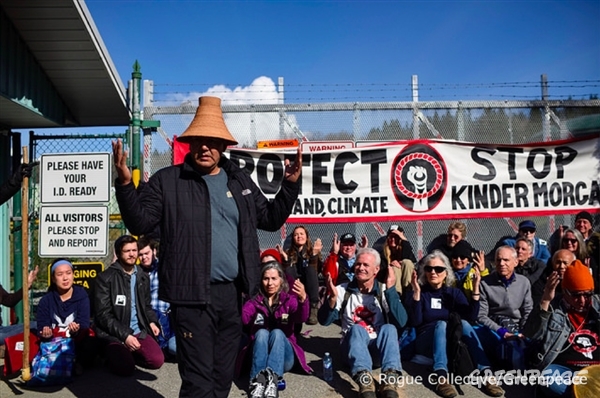
2) Solar panels along Keystone XL route: Keystone XL is another oil pipeline that many people will have heard of. It’s been proposed by Canadian pipeline company TransCanada and would carry tar sands oil from Canada to the U.S. Landowners and Indigenous groups along the pipeline’s route are joining together and inspiring people around the world with their creative resistance, including building solar panels directly in the route of the pipeline to prevent it from being constructed and sending the message that we have alternatives to fossil fuels.
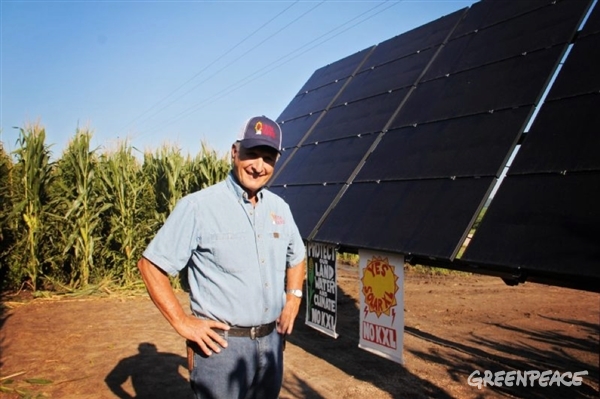
3) Standing strong in face of SLAPP suits: Last year, ETP launched a baseless $900 million Strategic Lawsuit Against Public Participation (SLAPP) against Greenpeace U.S., Greenpeace International and other groups for supporting the Indigenous-led movement at Standing Rock. In 2016, this iconic resistance movement drew global attention to the misdeeds of the pipeline industry. The lawsuit is aimed at silencing critics and driving a wedge between Indigenous Water Protectors and allies such as Greenpeace. This tactic has failed, and both Greenpeace and the wider movement have redoubled support for Indigenous-led pipeline resistance. Not only are we standing up to ETP, we’re united with other pipeline fights to resist all harmful oil pipelines.
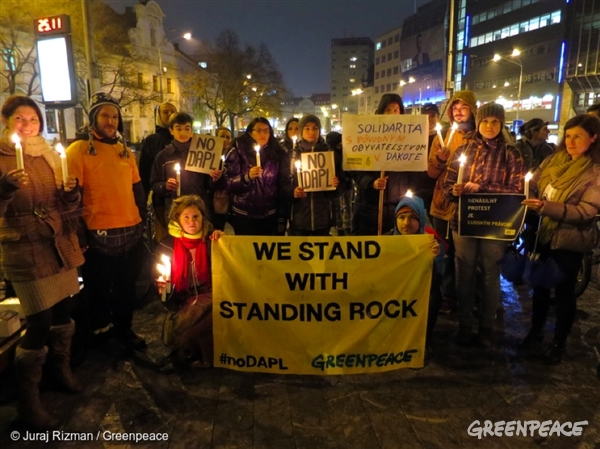
4) Civil disobedience to stop Line 3 construction: Enbridge’s Line 3 pipeline expansion project is yet another proposed pipeline from the Canadian tar sands to the U.S. Here too, Indigenous people are leading the fight. Honour the Earth, one of the key groups leading the resistance against this pipeline, states, “The proposed new route endangers the Great Lakes, home to one fifth of the world’s fresh water, and some of the most delicate soils, aquifers and pristine lakes in northern Minnesota. It also threatens critical resources on Ojibwe treaty lands, where tribal members retain the rights to hunt, fish, gather, hold ceremony, and travel.” Indigenous Water Protectors and allies have been peacefully putting themselves in the way of construction to stop this harmful project from going ahead.
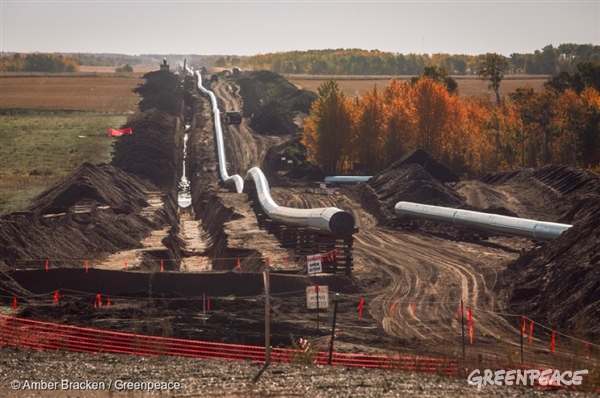
5) L’eau Est La Vie: In southern Louisiana, Energy Transfer Partners (ETP) is building yet another controversial pipeline, the Bayou Bridge pipeline, which would be the final, southern leg of the pipeline system that includes the Dakota Access Pipeline. L’eau Est La Vie means ‘Water is Life’ in French and is the name of an Indigenous-led resistance camp that has sprung up to oppose this project because of the threat it poses to clean drinking water, wetlands, and more. Last year, people came from far and wide to open the camp — “Indigenous leaders, environmental justice communities, and allied groups. Water protectors at L’eau Est La Vie opened with 12 straight days of prayer, beginning with a traditional Mayan prayer ceremony led by Doña Teresa, a Maya Quiché elder.” Read a personal account here.
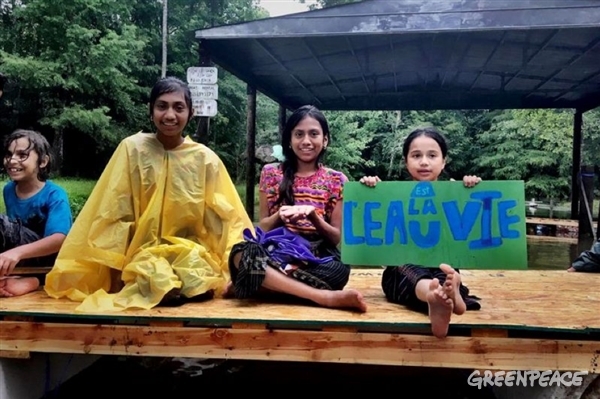
Feeling inspired? Want to hear more uplifting stories of people standing up to the oil industry? Join the movement to stop harmful oil pipelines.

Discussion
You can make any argument sound good no matter how wrong you are in your opinion. First Nations groups are easy to influence in either direction. Where does the diesel come from that powers your Rainbow Warrior? Despite the sails that are mounted on it to make it appear green.